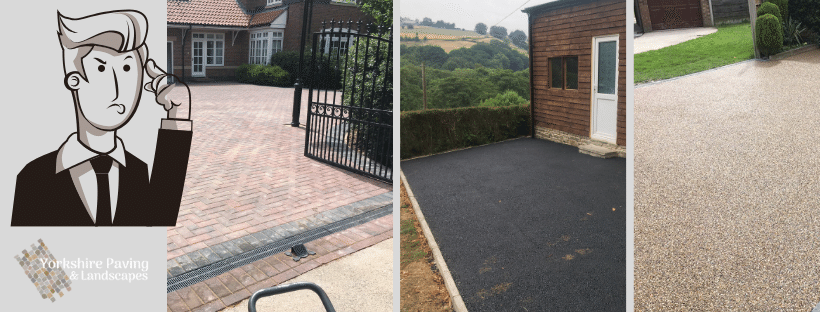For those of us who are lucky enough to have space, a driveway can be both a blessing and a curse. A substantial concrete driveway should last more or less forever, but one that starts crumbling or has not been well-constructed can be costly to repair or replace. It won’t take too long for a decayed driveway to become a home for weeds, and that does not make for kerb appeal
What type of driveway?
Having it covered in nonporous tarmac may seem like an attractive option for your pocket. Indeed will not be in terms of looks or drainage, which is one of the main concerns when constructing a new driveway. Lack of adequate drainage has been cited by the Planning Portal as one of the causes of the increase in localised flooding in the UK in the past few years, leading to introducing of new guidelines.

The above is a reason, any new driveway that takes away a front yard must be made from a porous driveway component such gravel. In most events, they will come under permitted development and not need any planning permission. However, it is always worth checking with a contractor or your council before you start work. Some of the local authorities have their guidelines, especially where listed buildings or preservation areas are concerned. You will usually need permission to drop a kerb to create new driveway access for your property.
The crunch of gravel under your tyres is might sound satisfying, especially if you own a country home, a massive 4×4 and a driveway that requires its own postcode. In more civilised circumstances, you may find that the mess can be annoying. Because of this, many people tend to opt for block-paved driveways when looking for something that declares itself with an effortless style.

Modern block-paved driveways usually sit atop a porous mesh, which accommodates drainage and also keeps the weeds at bay. This is a reliable option for any size of the driveway, although it can prove expensive and is a not one to attempt as a DIY challenge.
A more cost-effective and environmentally-friendly option may be to have a porous base covered with bark chippings. This does have some of the same problems as gravel, in that it can spread around the garden. But the chippings themselves are not too expensive to top up now and then. This can still cost, but it’s easier to initiate and maintain than a purely green parking space. It may look like you are just parking on your garden, but it will be a landscaped space that has been set up with plants that bind the soil together to make a space hardy enough to park your car on while allowing the rain to sink straight into the ground. The solution will be entirely plant-based or mixed in with a small number of slabs or blocks.

Those who are looking for something a bit more outstanding, whether for a new driveway or to replace a tired-looking one, should look no further than a resin-bonded drive. This surface looks like a gravel driveway, but with none of the mess, as the small stones are sealed in. The surface remains permeable, and you don’t have to sweep up gravel or bark chipping once a week. The other advantage of this kind of driveway is that you can bond any stone or finish into the resin finish, allowing you to use coloured stones or bright finishes.


Recent Comments